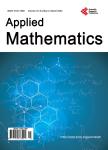Type 2 Possibility Factor Rotation in No-Data Problem
Type 2 Possibility Factor Rotation in No-Data Problem作者机构:Nara Community Tsubakikishi Shrine Nara Japan
出 版 物:《Applied Mathematics》 (应用数学(英文))
年 卷 期:2023年第14卷第10期
页 面:673-683页
学科分类:07[理学] 0701[理学-数学] 070101[理学-基础数学]
主 题:Type 2 Fuzzy Events Quadratic Mapping Formula Stochastic Differential Equation in Fuzzy Event Possibility Principal Factor Analysis Possibility Oblique Factor Analysis Initial and Stopping Condition
摘 要:Uemura [1] discovered a mapping formula that transforms and maps the state of nature into fuzzy events with a membership function that expresses the degree of attribution. In decision theory in no-data problems, sequential Bayesian inference is an example of this mapping formula, and Hori et al. [2] made the mapping formula multidimensional, introduced the concept of time, to Markov (decision) processes in fuzzy events under ergodic conditions, and derived stochastic differential equations in fuzzy events, although in reverse. In this paper, we focus on type 2 fuzzy. First, assuming that Type 2 Fuzzy Events are transformed and mapped onto the state of nature by a quadratic mapping formula that simultaneously considers longitudinal and transverse ambiguity, the joint stochastic differential equation representing these two ambiguities can be applied to possibility principal factor analysis if the weights of the equations are orthogonal. This indicates that the type 2 fuzzy is a two-dimensional possibility multivariate error model with longitudinal and transverse directions. Also, when the weights are oblique, it is a general possibility oblique factor analysis. Therefore, an example of type 2 fuzzy system theory is the possibility factor analysis. Furthermore, we show the initial and stopping condition on possibility factor rotation, on the base of possibility theory.



